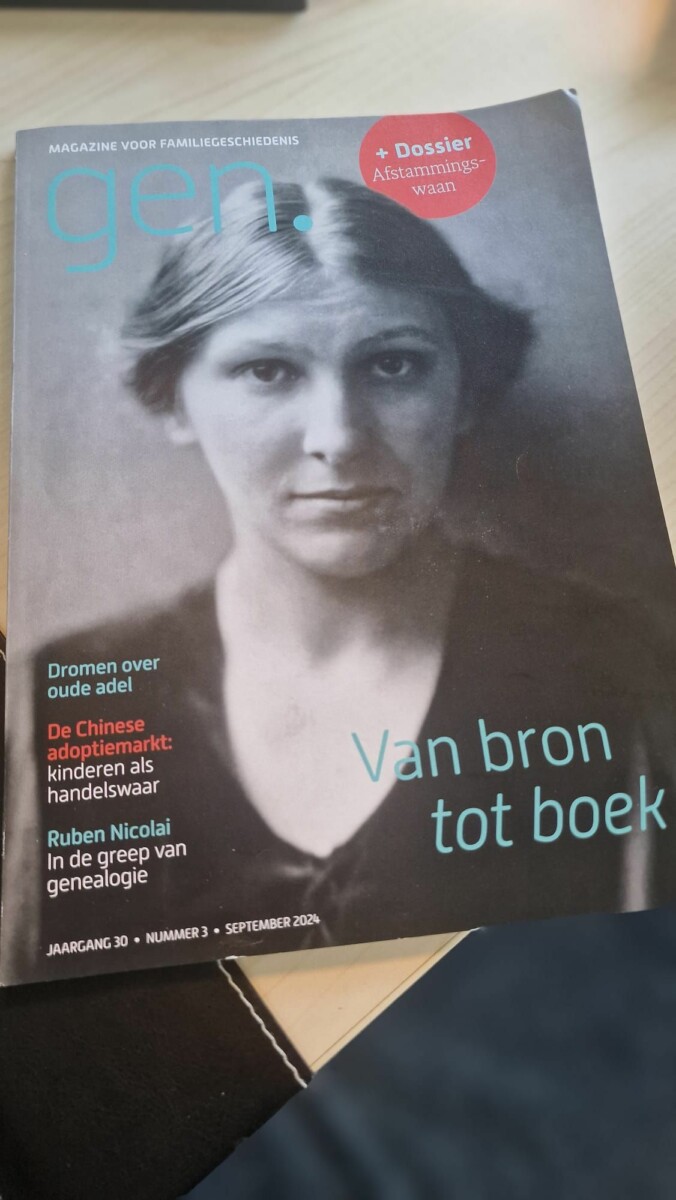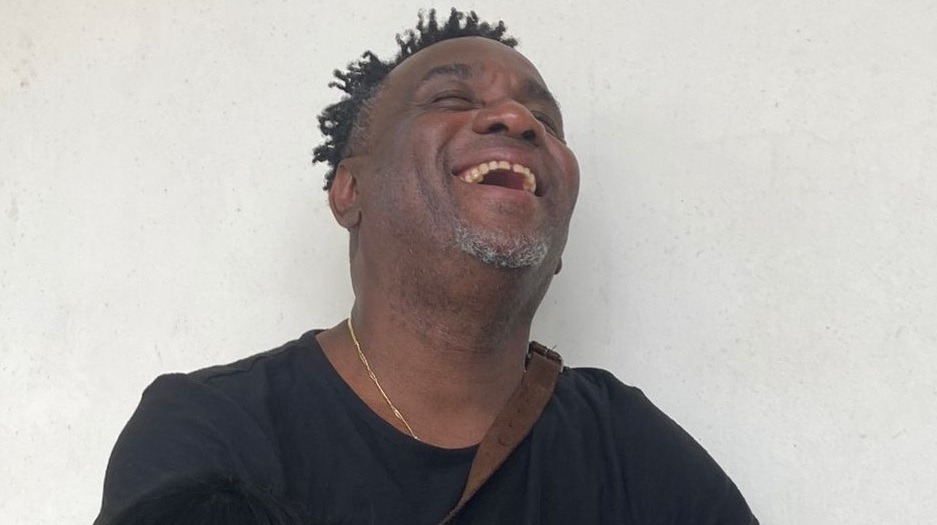 The building the Cabinet of the Minister Plenipotentiary of Sint Maarten is befitting the stature of the Caribbean island it represents in The Hague. Stately, with large windows looking out over the prominent busy Prinsessengracht in the political center of The Hague, this monumental building is where Jorien Wuite intends to represent Sint Maarten well and “to entice you to visit our 37 miles of splendor in the Eastern Caribbean.”
The building the Cabinet of the Minister Plenipotentiary of Sint Maarten is befitting the stature of the Caribbean island it represents in The Hague. Stately, with large windows looking out over the prominent busy Prinsessengracht in the political center of The Hague, this monumental building is where Jorien Wuite intends to represent Sint Maarten well and “to entice you to visit our 37 miles of splendor in the Eastern Caribbean.”
Sint Maarten, part of the Kingdom of the Netherlands, is a country on the southern part of a Caribbean island shared with Saint Martin, a French overseas collectivity. Its natural features span lagoons, beaches and salt pans. The capital, Philipsburg, has cobblestone streets and colorful, colonial-style buildings lining its Front Street shopping area.
The island was ravaged in September 2017 during the passing of Hurricane Irma, a Category 5 hurricane that packed near-record, sustained 185mph winds. Irma cut a devastating path through the region and the scale of destruction was steep.
One of the first things that will catch your attention when you enter the Cabinet, is a display of maquettes in the center of the main reception area: designs made by students from TU Delft whose professor took them to Sint Maarten to come up with ideas for sustainable reconstruction efforts for a new Heritage center in the aftermath of Hurricane Irma in September 2017.
They attest to Wuite’s style of diplomacy: “When Hurricane Irma tore through our island on September 6, 2017, it showed the enormous strength of the people of Sint Maarten, but also the significant challenges of a young and disaster-prone country. As a people, we are resilient, hopeful and purposeful. As a country, we have work to do. We need to strengthen our infrastructure, our economy and our institutions to avoid a repeat of the devastation wrought by Irma,” she says. Thus, as representative in the Netherlands, she continuously puts her position to work.
One of her main tasks in the Netherlands is to represent Sint Maarten in the Kingdom Council of Ministers. In this setting decisions are made concerning Kingdom related affairs, such as, treaties and global issues facing the entire Kingdom.
“I want to utilize my position as a public figure and political representative of Sint Maarten to contribute to the dialogue on critical challenges faced by not only Sint Maarten but also on a global level; for example Global Warming escalating to the current climate crises is of great importance to Small Island Developing States, who unfortunately bear the brunt of climate Change and its devastating effects.”
THE POSITION OF THE MINISTER PLENIPOTENTIARY dates from 1954, when the Charter for the Kingdom of the Netherlands was established.
At the onset in 1954, the Kingdom constituted three countries: the Netherlands, Suriname and the Netherlands Antilles. Suriname left the Kingdom when it gained independence in 1975. In 1986 Aruba became a separate country in the Kingdom and in 2010 the Netherlands Antilles seized to exist when Sint Maarten and Curaçao also became separate countries and Bonaire, Saba and Sint Eustatius became special municipalities.
Throughout these changes in Kingdom relations, the charter maintained its role as leading legal document of the Kingdom, that sets out the political relationship between the countries that constitute the Kingdom of the Netherlands. The Constitution of the Netherlands and the Basic Laws of all countries within are legally subordinate to the Charter.
The Ministers Plenipotentiary were appointed to represent the Caribbean in Dutch institutions. They represent their countries in the political heart of the Kingdom, in the Kingdom Council Meetings (RMR) and during debates in the Second and First Chambers, where they may submit input from their respective Governments in the Hague. They have no voting rights during these debates, but they do may request postponement to confer with their Governments.
“The Statute dates from a time before smart phones; traveling between the countries in the Kingdom didn’t use to happen as frequently as it happens now, so most contact at Government level was through the Ministers Plenipotentiary. These days a lot is done through direct contact via WhatsApp, Skype or telephone, with the Minister Plenipotentiary maintaining his/her role as permanent representative in The Hague. I invest a lot of my time in relationships with Ministers, parliamentarians, the Colleges of State and NGO’s. Because let’s be honest: WhatsApp and Skype will never measure up to face-to-face contact. I also spend a lot of time representing the culture of Sint Maarten and on keeping Sint Maarteners in the Netherlands tied to their country; the businesspeople, the professionals, the students. The ultimate goal is for all to play a role here in the rebuilding efforts for Sint Maarten. And to encourage young to return home after they are done studying here. There is work to do.”
Wuite hopes that the relationships that she fosters with organizations and institutions in the Netherlands will contribute continuously in the rebuilding efforts of Sint Maarten. Government has devised a National Recovery and Resilience Plan (NRRP) as a roadmap toward building Sint Maarten back better; it offers a comprehensive strategy to respond to the immediate needs of the people of Sint Maarten and to address other recovery and resilience needs in the near future. The NRRP is being carried out by the National Recovery Program Bureau (NRPB). “It is the blueprint on how we are rebuilding the island,” says Wuite.
One of the main elements of the plan is its “Building Back Better” component. “That refers to a range of improvements on the pre-disaster situation that have been recommended in the sector recovery strategies and needs analyses. It’s measures can include right-sizing, right-siting, and structural improvement of assets and infrastructure based on disaster risk and current demographic needs; improved building standards and structural improvements according to sector norms; improved service delivery standards per present sector developmental norms; and the human resources and skills development required to manage such improvements.”
The NRPB has been operational and tasked with the implementation of all recovery projects since March of this year. Whereby the funds are funneled through the World bank amounting to 550 million euros financed by the Government of the Netherlands. A number of projects to be implemented that will contribute to the sustainable redevelopment of Sint Maarten are projects aimed at eemergency Income Support and Training, SME strengthening, the reconstruction of the airport and coming to a long-term waste management solution.
CULTURAL DIPLOMACY
Wuite has who been Minister Plenipotentiary for Sint Maarten for a little over a year now, has always considered Sint Maarten home. Born in the Netherlands as the daughter of a Dutchman and a Sint Maarten woman, she studied at the prestigious Erasmus University in Rotterdam, before settling in the island in the 1990s.
A veteran civil servant driven for results, she worked as Director and Secretary General of both the Ministry of Public health, Social development and Labor, as well as the Ministry of Education Culture, Youth and Sports. In 2018, shortly after the passing of the devastating hurricanes Irma and Maria, she was appointed Minister of Education Culture Youth Affairs and Sports in the then interim government. After elections, she was appointed representative of Sint Maarten in the Netherlands as Minister Plenipotentiary, a position that goes well with her career and understanding of The Hague.
“In the year that has flown by with highs and lows, Sint Maarten has struggled with the reconstruction and much debate priorities, procedures and processes. Budgetary debates with limited liquidity have been challenging under these circumstances Sint Maarten was and in some way is still portrayed negatively here, in the media. We did not let these attacks faze us in our efforts to represent and move our island forward,” she says.
She says that her Cabinet has also been able to forge a powerful and dynamic working relationship with the counterparts representing the islands of Curacao and Aruba. “We instituted joint consultations in which we discuss various issues, which leads to an active collaboration and strong administrative interpretations and more balance in the Kingdom Council Meetings (RMR).”
Her first year in office was mainly a year of cultural diplomacy. “One of the highlights was presenting the artwork “185-Mile Winds” by Sint Maarten artist Ruby Bute. Ms. Bute, one of Sint Maarten’s most renowned painters who was knighted by the then queen of the Netherlands her Royal Highness Beatrix, painted the artwork one year after the passing of Hurricane Irma. The artwork is an expression of the impact of Irma, Sint Maarten’s resilience but also an expression of gratitude towards the support that our country received. The painting has made a tour via a number of government and other entities in The Hague, was on display with the Ministries of Defense and Education, and in the First and Second Chambers of the Dutch Parliament. Wuite made the presentation in the 2nd chamber where the artwork will remain for 2 years, together with Carla Vlaun, a master’s graduate who also hails from Sint Maarten. She believes that cultural diplomacy assists with new relationships and narratives within the Kingdom of The Netherlands.
“I fulfilled a silent wish of being the connecting factor for local arts within the Kingdom. It is important to grow awareness and appreciation of local art-forms. Having this piece on display at the highest legislative bodies within the Netherlands was definitely a high note,” says Wuite.
THE CABINET OF THE MINISTER PLENIPOTENTIARY
The Cabinet is studded by eight dedicated professionals. “By moving to the new location we have become more accessible for others and we are also in a better position to represent and work on the repositioning of our island,” says Wuite.
GOAL FOR 2019-2020
Wuite says that the goal for the parliamentary year 2019-2020 should be on economic diplomacy and on forging economic partnerships between the Netherlands, interested countries and Sint Maarten. “Our program has a clear path for the rebranding and repositioning of Sint Maarten; it forms an integral part of our mission and we should also highlight and focus on opportunities for Sint Maarten entrepreneurs both here and on island,” she says.
She supports and encourages remigration of graduating scholars and young professionals in the Netherlands back to the island to work jointly on the recovery and repositioning process of Sint Maarten. “With a special priority for a legislation program for young law professionals, we need to commit to combating the brain drain which is being felt throughout the Caribbean. By keeping this target group closely involved with the Cabinet and with their peers through the soon to be launched Platform 721, this group (the Sint Maarten Diaspora in the Netherlands) will be afforded the opportunity to actively participate and advise on ways and means to make the island even more progressive and innovative. I also understand that home grown legislative lawyers are required to further build the democratic foundation and critical elements of the rule of law in a modern, Caribbean society”.
Wuite was this year also chosen as one of the ambassadors for the Black Achievement Month, a month-long string of events in October that celebrate black Dutch excellence in the Netherlands. In its fourth year, Black Achievement Month is organized by the National Institute for Dutch Slavery Remembrance and Heritage NiNsee. It is intended to “contribute to a balanced representation of people of African descent; their representation is too often determined by what was written and said about them during the days of slavery and colonialism.”
“It is an absolute honor for me to be an ambassador to the worthy event and represent the ancestors of the people from Sint Maarten who also contributed -albeit unwillingly- to what constitutes the Dutch Kingdom today. In my position as representative of Sint Maarten in the Netherlands it behooves me to contribute to a proper representation of their descendants,” said Wuite.
She believes that it is important that Caribbean people of African descent know, accept and are proud of their heritage is important, and is therefore a champion of fostering tighter relations amongst themselves and in larger extent with the continent their ancestors were stolen from. “Our people have persevered through the ages and today, with all that we have attained in the Caribbean we can be a credible partner with countries in Africa. Taking part in the Black Achievement Month ties into that believe as well,” she says, while also emphasizing the month-long event fits into seamlessly into the cultural diplomacy of her office. ”As a Caribbean country we are a multi-layered society. Our blend makes that we have a lot to offer the world.”
OPPORTUNITIES BEYOND SINT MAARTEN’s SHORES
Wuite is confident that Sint Maarten is on its way back. There has been a measurable improvement in the growth of returning visitors. Only recently it was noted that the industry is one of the fastest to rebound after all the destruction Irma left in its wake in the region. With more than 70% of our hotel capacity pre-Irma ready for business and the majority of our cruise and air traffic back to its pre-Irma levels Additionally, we are working on establishing even more direct connections to our shores from within the region.





